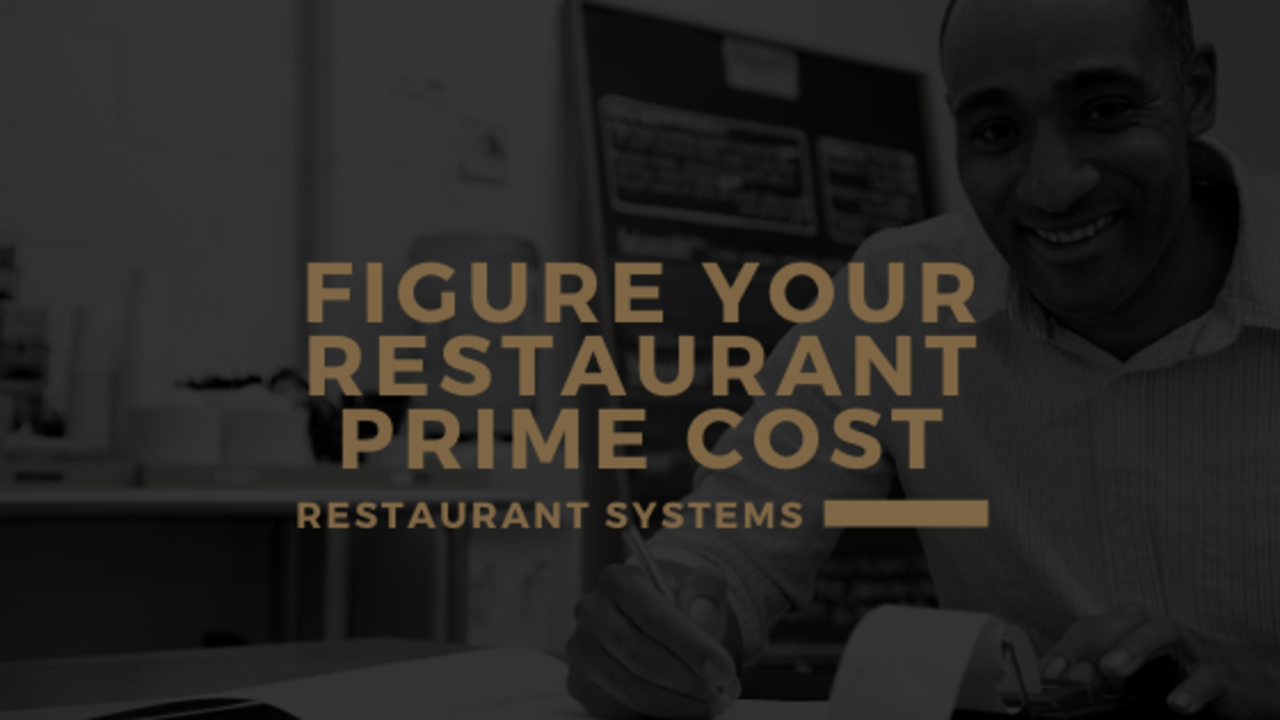Restaurant Prime Cost for Independent Owner

Restaurant prime cost for an independent owner is a critical formula to know. Experts like me, we throw it around like everybody knows restaurant prime cost when a lot of independent operators don't know their own prime cost percentage. Watch the video below or keep scrolling to read to get the restaurant prime cost formula broken down.
We're going to talk about my favorite topic and that's prime cost because I'm the prime cost guy. I'm the authority on giving you the systems to reduce your prime cost, make the money you deserve and put the systems in place to give you the freedom to leave your business.
What is the restaurant prime cost formula?
It starts with total cost of goods sold? That's food cost, bottled beer, draught beer, wine, liquor costs together. That requires taking inventories beginning inventory plus purchase, minus ending gives me use, use divided by sales. That use is my cost to goods sold that that divided by sales gives me the food costs percentage, the pour cost percentage, or in this case overall, it's total cost goods sold. Then we're going to add to that total labor costs, including taxes, benefits and insurance.
If I pay somebody $15 an hour, I call that raw labor costs. We also match their FICA, SUI, and so on, there's taxes. That's cost. There's benefits. If you are in a state that requires health insurance and/or workers’ comp insurance, those are part of restaurant prime cost. So total costs of goods sold plus total labor costs.
Now, owners, you're part of that or not a part of it, depending on whether you are managing. If you want to get into the details, make sure you search for more articles about prime cost on my site or click here. I've got lots of videos on prime cost. This one, I just go through the formula.
If I take total cost of goods sold, plus total labor costs, including taxes, benefits and insurance, I divide that into my gross sales.
Now, this is important because there's gross and net sales and what your POS system calls gross sales, in 8 out of 10 POS systems, it is really net sales.
Let's define it by ringing a burger up for $10 and comp it for $5, not including sales tax. Sales tax is not a sale. Ring in a $10 burger and comp $5. That's net sales. That's after discounts, not including sales tax.
Gross sales ring up the $10 burger, comp $5, not including sales tax. The $10 original purchase is a sale and that allows us to have an accurate cost of goods sold because it doesn't matter if you give away items for good reason or bad reason. You should have brought in that $10, and you actually use that much in product.
If you want to manage your managers properly, you're going to do so. If I start reducing all these sales, my labor cost goes up. Right? All it says is I actually sold it when I comp something, but I didn't collect the money. That's not your manager's fault most of the time. That's why we need to keep track of the reasons why and fix those in the POS system. It could be cold food went that should have been hot. Someone burnt a steak or gave bad service, there were long ticket times, and so on. Those are actionable items. But the truth of matter is we still delivered it. We should have got that money. We can make change.
If you want to really just put it into perspective, it's simple arithmetic: total cost of goods sold, plus total labor costs. Take those together. Divide it into your gross sales. That's your prime cost formula.
But the magic behind it is what you do with it.
I cover Restaurant 101, putting systems in place and more in my book. Order your copy of Restaurant Prosperity Formula: What Successful Restaurateurs Do here.
You can also complete a free restaurant evaluation. It's a great way to identify immediate opportunities where you can make things better in your restaurant.
Be sure to visit my YouTube channel for more helpful restaurant management video tips.




